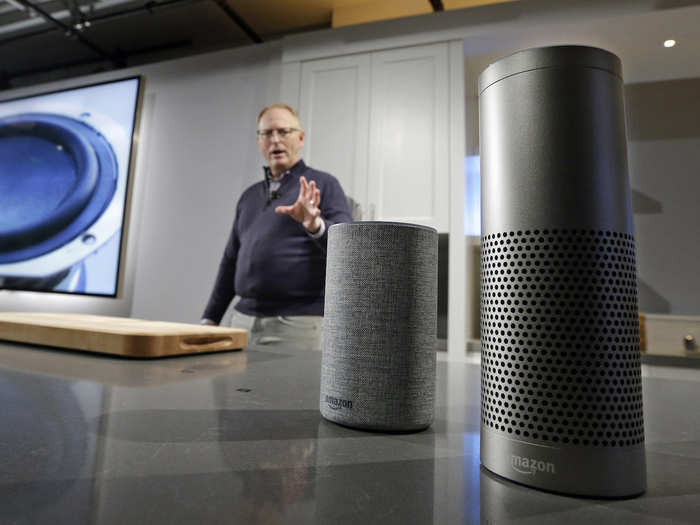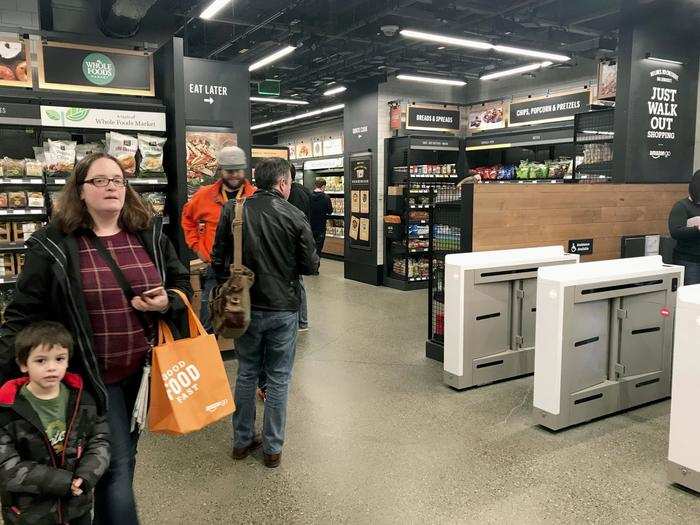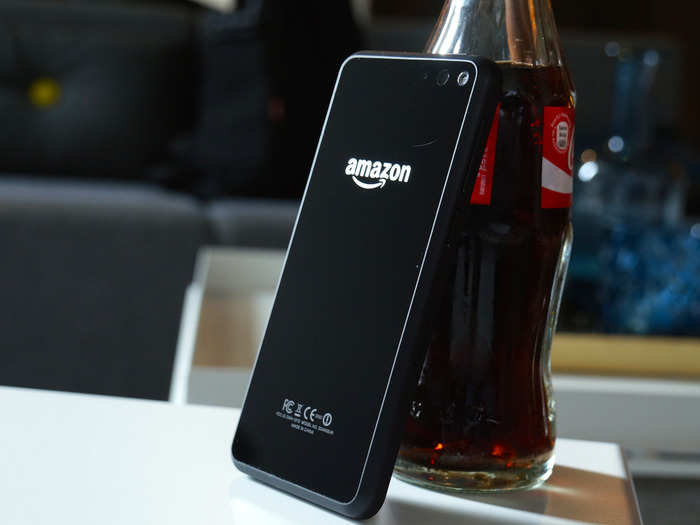- Home
- slideshows
- miscellaneous
- Amazon's Jeff Bezos highlights the importance of 'wandering' and failing big in his annual shareholder letter
Amazon's Jeff Bezos highlights the importance of 'wandering' and failing big in his annual shareholder letter
2018 Letter to Shareholders:

Intuition, curiosity, and the power of wandering

From very early on in Amazon’s life, we knew we wanted to create a culture of builders – people who are curious, explorers. They like to invent. Even when they’re experts, they are “fresh” with a beginner’s mind. They see the way we do things as just the way we do things now. A builder’s mentality helps us approach big, hard-to-solve opportunities with a humble conviction that success can come through iteration: invent, launch, reinvent, relaunch, start over, rinse, repeat, again and again. They know the path to success is anything but straight.
Sometimes (often actually) in business, you do know where you’re going, and when you do, you can be efficient. Put in place a plan and execute. In contrast, wandering in business is not efficient … but it’s also not random. It’s guided – by hunch, gut, intuition, curiosity, and powered by a deep conviction that the prize for customers is big enough that it’s worth being a little messy and tangential to find our way there. Wandering is an essential counter-balance to efficiency. You need to employ both. The outsized discoveries – the “non-linear” ones – are highly likely to require wandering.
AWS’s millions of customers range from startups to large enterprises, government entities to nonprofits, each looking to build better solutions for their end users. We spend a lot of time thinking about what those organizations want and what the people inside them – developers, dev managers, ops managers, CIOs, chief digital officers, chief information security officers, etc. – want.
Much of what we build at AWS is based on listening to customers. It’s critical to ask customers what they want, listen carefully to their answers, and figure out a plan to provide it thoughtfully and quickly (speed matters in business!). No business could thrive without that kind of customer obsession. But it’s also not enough. The biggest needle movers will be things that customers don’t know to ask for. We must invent on their behalf. We have to tap into our own inner imagination about what’s possible.
AWS itself – as a whole – is an example. No one asked for AWS. No one. Turns out the world was in fact ready and hungry for an offering like AWS but didn’t know it. We had a hunch, followed our curiosity, took the necessary financial risks, and began building – reworking, experimenting, and iterating countless times as we proceeded.
Within AWS, that same pattern has recurred many times. For example, we invented DynamoDB, a highly scalable, low latency key-value database now used by thousands of AWS customers. And on the listening carefully-to-customers side, we heard loudly that companies felt constrained by their commercial database options and had been unhappy with their database providers for decades – these offerings are expensive, proprietary, have high-lock-in and punitive licensing terms. We spent several years building our own database engine, Amazon Aurora, a fully-managed MySQL and PostgreSQL-compatible service with the same or better durability and availability as the commercial engines, but at one-tenth of the cost. We were not surprised when this worked.
But we’re also optimistic about specialized databases for specialized workloads. Over the past 20 to 30 years, companies ran most of their workloads using relational databases. The broad familiarity with relational databases among developers made this technology the go-to even when it wasn’t ideal. Though sub-optimal, the data set sizes were often small enough and the acceptable query latencies long enough that you could make it work. But today, many applications are storing very large amounts of data – terabytes and petabytes. And the requirements for apps have changed. Modern applications are driving the need for low latencies, real-time processing, and the ability to process millions of requests per second. It’s not just key-value stores like DynamoDB, but also in-memory databases like Amazon ElastiCache, time series databases like Amazon Timestream, and ledger solutions like Amazon Quantum Ledger Database – the right tool for the right job saves money and gets your product to market faster.
We’re also plunging into helping companies harness Machine Learning. We’ve been working on this for a long time, and, as with other important advances, our initial attempts to externalize some of our early internal Machine Learning tools were failures. It took years of wandering – experimentation, iteration, and refinement, as well as valuable insights from our customers – to enable us to find SageMaker, which launched just 18 months ago. SageMaker removes the heavy lifting, complexity, and guesswork from each step of the machine learning process – democratizing AI. Today, thousands of customers are building machine learning models on top of AWS with SageMaker. We continue to enhance the service, including by adding new reinforcement learning capabilities. Reinforcement learning has a steep learning curve and many moving parts, which has largely put it out of reach of all but the most well-funded and technical organizations, until now. None of this would be possible without a culture of curiosity and a willingness to try totally new things on behalf of customers. And customers are responding to our customer-centric wandering and listening – AWS is now a $30 billion annual run rate business and growing fast.
Imagining the impossible

Amazon today remains a small player in global retail. We represent a low single-digit percentage of the retail market, and there are much larger retailers in every country where we operate. And that’s largely because nearly 90% of retail remains offline, in brick and mortar stores. For many years, we considered how we might serve customers in physical stores, but felt we needed first to invent something that would really delight customers in that environment. With Amazon Go, we had a clear vision. Get rid of the worst thing about physical retail: checkout lines. No one likes to wait in line. Instead, we imagined a store where you could walk in, pick up what you wanted, and leave.
Getting there was hard. Technically hard. It required the efforts of hundreds of smart, dedicated computer scientists and engineers around the world. We had to design and build our own proprietary cameras and shelves and invent new computer vision algorithms, including the ability to stitch together imagery from hundreds of cooperating cameras. And we had to do it in a way where the technology worked so well that it simply receded into the background, invisible. The reward has been the response from customers, who’ve described the experience of shopping at Amazon Go as “magical.” We now have 10 stores in Chicago, San Francisco, and Seattle, and are excited about the future.
Failure needs to scale too

As a company grows, everything needs to scale, including the size of your failed experiments. If the size of your failures isn’t growing, you’re not going to be inventing at a size that can actually move the needle. Amazon will be experimenting at the right scale for a company of our size if we occasionally have multibillion-dollar failures. Of course, we won’t undertake such experiments cavalierly. We will work hard to make them good bets, but not all good bets will ultimately pay out. This kind of large-scale risk taking is part of the service we as a large company can provide to our customers and to society. The good news for shareowners is that a single big winning bet can more than cover the cost of many losers.
Development of the Fire phone and Echo was started around the same time. While the Fire phone was a failure, we were able to take our learnings (as well as the developers) and accelerate our efforts building Echo and Alexa. The vision for Echo and Alexa was inspired by the Star Trek computer. The idea also had origins in two other arenas where we’d been building and wandering for years: machine learning and the cloud. From Amazon’s early days, machine learning was an essential part of our product recommendations, and AWS gave us a front row seat to the capabilities of the cloud. After many years of development, Echo debuted in 2014, powered by Alexa, who lives in the AWS cloud.
No customer was asking for Echo. This was definitely us wandering. Market research doesn’t help. If you had gone to a customer in 2013 and said “Would you like a black, always-on cylinder in your kitchen about the size of a Pringles can that you can talk to and ask questions, that also turns on your lights and plays music?” I guarantee you they’d have looked at you strangely and said “No, thank you.”
Since that first-generation Echo, customers have purchased more than 100 million Alexa-enabled devices. Last year, we improved Alexa’s ability to understand requests and answer questions by more than 20%, while adding billions of facts to make Alexa more knowledgeable than ever. Developers doubled the number of Alexa skills to over 80,000, and customers spoke to Alexa tens of billions more times in 2018 compared to 2017. The number of devices with Alexa built-in more than doubled in 2018. There are now more than 150 different products available with Alexa built-in, from headphones and PCs to cars and smart home devices. Much more to come!
One last thing before closing. As I said in the first shareholder letter more than 20 years ago, our focus is on hiring and retaining versatile and talented employees who can think like owners. Achieving that requires investing in our employees, and, as with so many other things at Amazon, we use not just analysis but also intuition and heart to find our way forward.
Last year, we raised our minimum wage to $15-an-hour for all full-time, part-time, temporary, and seasonal employees across the U.S. This wage hike benefitted more than 250,000 Amazon employees, as well as over 100,000 seasonal employees who worked at Amazon sites across the country last holiday. We strongly believe that this will benefit our business as we invest in our employees. But that is not what drove the decision. We had always offered competitive wages. But we decided it was time to lead – to offer wages that went beyond competitive. We did it because it seemed like the right thing to do.
Today I challenge our top retail competitors (you know who you are!) to match our employee benefits and our $15 minimum wage. Do it! Better yet, go to $16 and throw the gauntlet back at us. It’s a kind of competition that will benefit everyone.
Many of the other programs we have introduced for our employees came as much from the heart as the head. I’ve mentioned before the Career Choice program, which pays up to 95% of tuition and fees towards a certificate or diploma in qualified fields of study, leading to in-demand careers for our associates, even if those careers take them away from Amazon. More than 16,000 employees have now taken advantage of the program, which continues to grow. Similarly, our Career Skills program trains hourly associates in critical job skills like resume writing, how to communicate effectively, and computer basics. In October of last year, in continuation of these commitments, we signed the President’s Pledge to America’s Workers and announced we will be upskilling 50,000 U.S. employees through our range of innovative training programs.
Our investments are not limited to our current employees or even to the present. To train tomorrow’s workforce, we have pledged $50 million, including through our recently announced Amazon Future Engineer program, to support STEM and CS education around the country for elementary, high school, and university students, with a particular focus on attracting more girls and minorities to these professions. We also continue to take advantage of the incredible talents of our veterans. We are well on our way to meeting our pledge to hire 25,000 veterans and military spouses by 2021. And through the Amazon Technical Veterans Apprenticeship program, we are providing veterans on-the-job training in fields like cloud computing.
A huge thank you to our customers for allowing us to serve you while always challenging us to do even better, to our shareowners for your continuing support, and to all our employees worldwide for your hard work and pioneering spirit. Teams all across Amazon are listening to customers and wandering on their behalf!
As always, I attach a copy of our original 1997 letter. It remains Day 1.
Sincerely,
Jeffrey P. Bezos
Founder and Chief Executive Officer
Amazon.com, Inc.
Popular Right Now
Popular Keywords
Advertisement